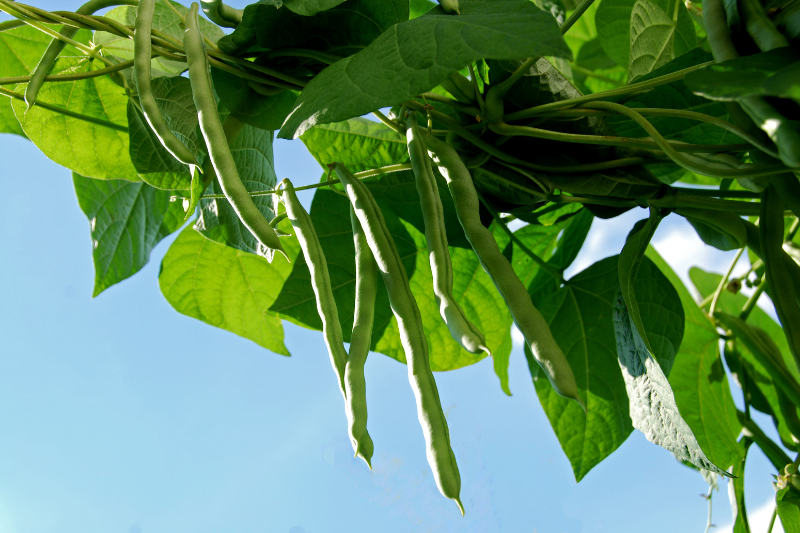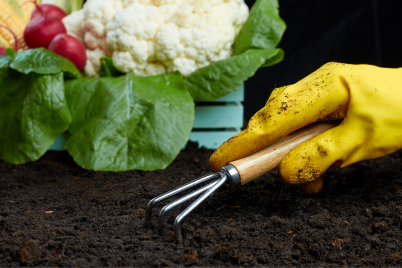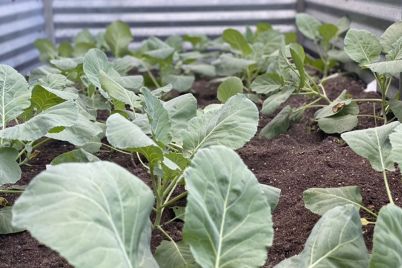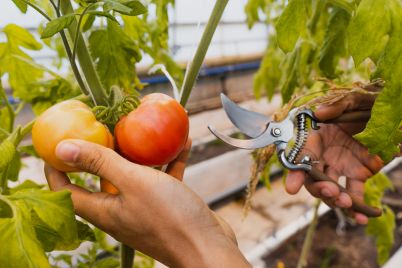‘Most green beans are green, but some are bright purple, some have purple stripes, and wax beans are golden yellow. Bright purple bean pods are an amazing sight in the garden, but unfortunately, they turn green when cooked,’ said garden enthusiast, Joyce Woodson.
BY JOYCE WOODSON, Garden Enthusiast
Green beans, also known as snap beans, are a garden favorite because they are fairly easy to grow, mature quickly and most people, especially children, enjoy eating them. In Pinellas County, most types of green beans grow best from fall through spring. Now is the time to plant them.
Bush beans are low growing at 12 to 18 inches in height and rarely require staking to keep them from falling over. However, I recommend using stakes every three feet and running a weather-resistant twine between the stakes to give bush beans added support.
Most bush beans mature in 50 to 60 days and continue producing for many weeks if they are picked regularly. Two plants per person should produce enough for one serving per week. If you have space, it’s a good idea to stagger planting bush beans every two to three weeks over the growing season so you have a steady supply.
Beans are grown in regular compost-enriched garden soil and do not need fertilizers. In fact, adding fertilizer, especially nitrogen-based fertilizer, will increase leaf production and decrease fruit production. Beans are also quite drought resistant until they begin producing pods; then, soil should be kept evenly moist.
In general, green beans are indeterminate; they produce over a long period of time before eventually waning. Masai, which has the shortest maturity of all at 47 days, produces most of its crop at once, with a few stragglers over two to three weeks.
Most green beans are green, but some are bright purple, some have purple stripes, and wax beans are golden yellow. Bright purple bean pods are an amazing sight in the garden, but unfortunately, they turn green when cooked.
My favorites are Blue Lake 47, Masai, and Tendergreen. Nematodes are an ever-present problem in our hot, sandy soil, so I grow all types of beans in containers. I find Masai to be the most reliable container-grown variety.
Pole beans are excellent choices for smaller gardens if you install a trellis for vertical gardening. As with bush types, pole beans come in the same bold colors. Pole beans are usually larger and meatier than bush beans; they stand up well to stews and soup. Pole beans take longer to mature, producing in 60 to 80 days, but they produce over a long period of time.
Although they are actually in the pea family, long beans (also called asparagus beans) are pole varieties primarily grown in the summer. These beans are in the black-eyed pea family and grow to a whopping 12-18 inches long. Their growth cycle is also long, at 80 to 90 days, so they are unsuitable for fall gardening. Long beans come in green and dark red. Unlike their bean cousins, red long beans retain color when cooked.
Our semi-tropical climate allows perennial wing beans and runner beans to grow. My wing beans are two years old now. Scarlet Runner beans will grow here in the right location and can produce for decades. They prefer a more temperate climate, so an eastern exposure or dappled, full sun would be best.
All beans have pests and diseases that can wipe out your crop. Pests like nematodes make it difficult to grow any bean in the ground if you have sandy soil, but above-ground pests are also a challenge. Aphids do the most damage. A strong jet spray from your hose will dislodge aphids, but you must do it daily. Neem is helpful, too, but aphids are determined, little creatures. Lady bugs are a great defense. You can order ladybugs online and release them in your garden.
Beans are susceptible to fungi, viruses, and bacterial diseases. Keeping the garden clean, plants spread apart and watering the dirt and not the plant will help to reduce the spread of disease. However, insects spread many diseases despite our best efforts. Beans are quick to produce, and fungus rarely kills the plant if it is dealt with quickly. Viruses and bacterial problems are deadly, though, requiring the entire plant to be thrown away. Remember: don’t compost any diseased plant as the disease may continue to live and contaminate the compost pile.
I order almost all of my seeds from Pinetree Gardens at www.superseeds.com. They are the most affordable online store I have found and ship quickly. To save on shipping costs, you could order with gardening friends or determine your annual seed requirements and order all of them at one time. Keep seeds in a cool, dry place so they will be viable for more than one planting season.
In the next blog, we will discuss various fall crops. Happy Gardening!
 Real estate agent Joyce Woodson loves gardening and sharing what she knows. The founder of “Straw Hat Gardening,” she has taught classes on basic organic gardening and provided garden consultations. To reach Joyce, email gardening@joycewoodson.net.
Real estate agent Joyce Woodson loves gardening and sharing what she knows. The founder of “Straw Hat Gardening,” she has taught classes on basic organic gardening and provided garden consultations. To reach Joyce, email gardening@joycewoodson.net.








